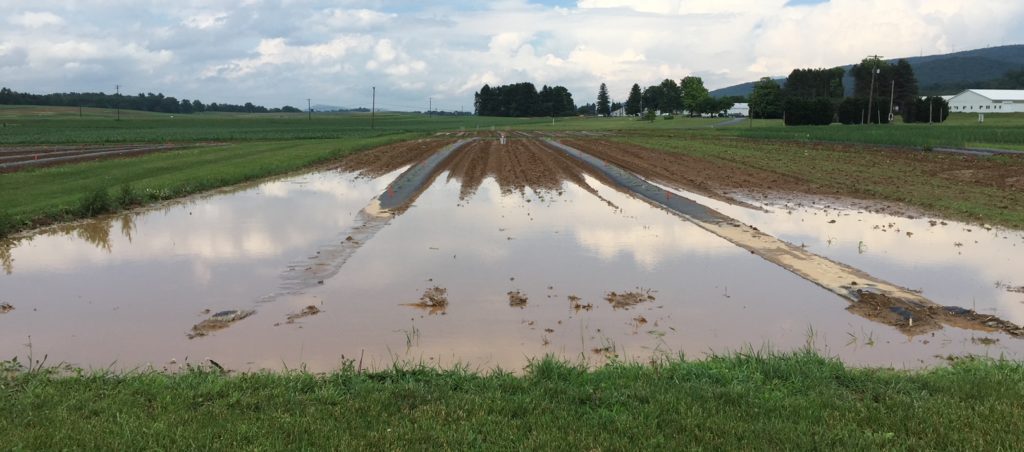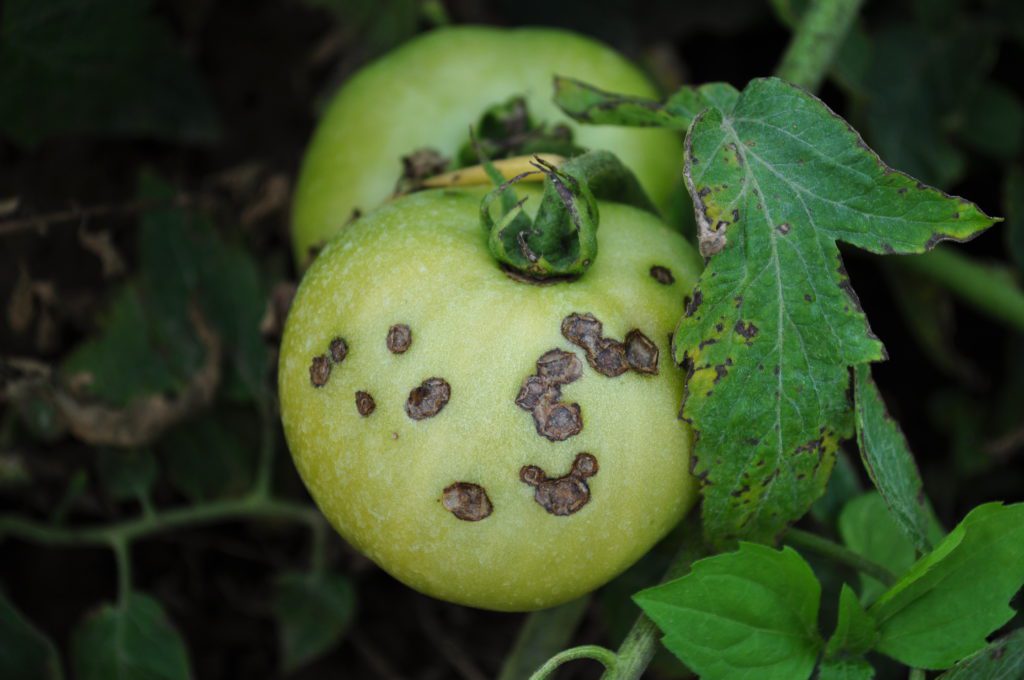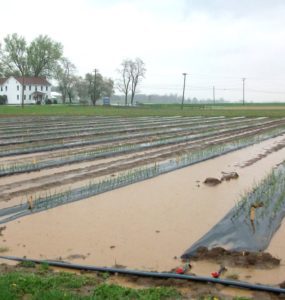

May 1, 2019Wet season challenges growers in eastern US
Growers from Wisconsin to Pennsylvania are hoping for sun this summer after rainy days during 2018 led to trouble with plant disease and lower yields.
It was an above-average year for precipitation from the Great Plains to the Atlantic Coast, according to the National Weather Service’s annual report.
Wisconsin Potato & Vegetable Growers Association blamed the wet year for a 12 percent decline in its potato crop, and the East’s precipitation was even more extraordinary. Pennsylvania was one of nine states that experienced “their wettest annual period on record,” according to the National Weather Service. The others were Tennessee, North Carolina, Virginia, West Virginia, Maryland, Delaware and Massachusetts.
Penn State University vegetable pathologist Beth Gugino kept busy diagnosing different outbreaks for growers, related to the wet weather.
Gugino discussed disease management during three education sessions at January’s Mid-Atlantic Fruit and Vegetable Convention in Hershey, Pennsylvania. Growers at the convention often joked often about the dismal growing conditions of the past year.
Fungal diseases in tomato leaves, head rot in broccoli and cauliflower, and vine crop disease management were all areas of concern that Gugino spoke about at the convention.
Vine crop concerns


Gugino said the weather also made it difficult to seed, transplant and spray fungicides.
“To say that this year was a minor challenge was really an understatement,” she said. “I think we really struggled, especially in our vine crops, producing any types of yield, and also producing high-quality yield.”
Plants can usually live in waterlogged soils for up to 48 hours, but longer than that and the plant roots begin shut down, she said.
Gugino gave a few mitigation strategies for the growers:
- Avoid working wet soils if possible, especially fine-textured soils that compact easily.
- Replenish nutrients that may have been leached either by side-dressing or fertigating.
- Use a subsoiler between beds to break up layers of compaction, especially if exposed to heavy traffic.
- Consider row orientation and if cutting drainage channels at the end of rows would help.
- Plant or mulch row middles to reduce potential erosion.
“Diseases are exacerbated in wet weather,” she said. “I wish I could tell you one that really isn’t. Bacterial diseases obviously – I mean they are really spread by rain splashing … fungal foliar diseases, fruit rots and root rots, they’re going to be exacerbated by the wet weather we’re going to be having.”
Curbing diseases


Gugino cautioned growers against carelessly spreading fungi around the farm. For instance, if there is a fungal infection in the field, but not in the high tunnels, it might be a better strategy to start the morning working in the tunnels and then move to the field – rather than vice versa.
Disease can also be spread by equipment. One way to avoid transferring disease is disinfecting tomato stakes between crops. A more extreme example given at the conference was using a different disposable razor for trimming each plant.
A three-year crop rotation between different vegetable families is also a good practice to prevent a serious problem from holding over from year to year.
She also encouraged growers to be familiar with when and where diseases are likely to develop.
Some of the usual suspects include early blight and septoria leaf blight.
Early blight is often caused by Alternaria solani, and appear as small, brown-to-black circular lesions that may develop yellow chlorotic spots. Symptoms often develop on the plant’s lower leaves and then work up – it’s encouraged by wet and warm temperatures.
Fruit rots can come later in the season – caused by early blight fungi in addition to other species: Alternaria alternata and colletotrichum.
Head rot in broccoli


Gugino said that there has been an increase in broccoli and cauliflower acreage across the region, and the rain led to an increased number of “head rot diseases.”
“In general, head rot is characterized by water-soaking and discoloration of individual or small groups of florets,” according to a Gugino paper published in the convention proceedings. The conditions are made worse by moisture on the florets.
But defining the type of disease can also be a big help.
Bacterial head rot starts with little soaked spots on the immature florets where the water collects. As time goes on the areas can become necrotic and turn black or brown. Ways to avoid bacterial head rot include choosing a variety that has dome-shaped, rather than flat heads, and cultural practices that help the plants dry off with better air circulation.
Black rot is caused by the bacterial pathogen Santhomonas capestris. Symptoms usually first are seen at leaf edges. Leaf lesions often are yellow and V-shaped. Copper is the primary management tool for broccoli already transplanted in the field, but Gugino said the emphasis needs to be on growing transplants in a clean area, and selecting healthy transplants.
Downy mildew is caused by an oomycete, or water mold pathogen called Hyaloperonospora brassicae. Outbreaks are common in the fall in the Mid-Atlantic region. Purple and yellowish-brown lesions develop on the upper leaf surface. Some fungicides are available for downy mildew, and crop rotation and plowing plant residue can prevent the pathogen from surviving between crops.
Alternaria leaf spot and head rot is caused by a fungal pathogen. Lesions on leaves start as small dark spots that expand to two- or three-inch concentric rings, according to Gugino. Infected heads of broccoli and cauliflower have small black or brown spots.
Many of the cultural practices recommended for the other diseases will also help to manage Alternaria leaf spot, she wrote. “Some research has shown that mulches and other barriers that reduce soil splash can help with disease management. Protection of the broccoli and cauliflower heads is important especially once symptoms are observed in the field.”
– Stephen Kloosterman, associate editor
At top, a flooded pumpkin field. Photos by Beth K. Gugino














